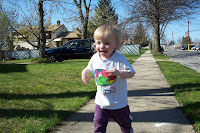
Cardiologist and Famed Running Writer George Sheehan often talked and wrote about the overlooked ingredient in most runners training--
sleep: "Do not cheat on your sleep. Add an extra hour when in heavy training. Also arrange for at least one or two naps a week and take a long one after your weekend run."
Bill Rodgers, one of America's all time greatest runners (#1 ranked marathoner in the world 3 years, winner of the Boston (4 times) and NY Marathon (4 times)) also talked about the importance of sleep in his training when he said:
“No one who works a 40 hour week will ever beat me.”
More recently Rodgers said: "Sometimes it would be a better idea to use your workout time to sleep rather than run. I started napping in my late 40's."
Recent studies have confirmed what Rodgers, Dr. Sheehan, knew and what coaches and many runners have discovered the hard way-- getting extra over an extended period of time improves performance mood and alertness. Here is the study as reported in Science Daily:
"Participants in this ongoing study were five healthy students on the Stanford University men’s and women’s swimming teams. For the first two weeks of the study, the students maintained their usual sleep-wake pattern. The athletes then extended their sleep to 10 hours per day for six to seven weeks.
Athletic performance was assessed after each regularly scheduled swim practice. After obtaining extra sleep, athletes swam a 15-meter meter sprint 0.51 seconds faster, reacted 0.15 seconds quicker off the blocks, improved turn time by 0.10 seconds and increased kick strokes by 5.0 kicks.
“These results begin to elucidate the importance of sleep on athletic performance and, more specifically, how sleep is a significant factor in achieving peak athletic performance,” said lead author Cheri Mah of the Stanford Sleep Disorders Clinic and Research Laboratory. “While this study focuses specifically on collegiate swimmers, it agrees with data from my other studies of different sports and suggests that athletes across all sports can greatly benefit from extra sleep and can gain the additional competitive edge to perform at their highest level.”
The study also monitored daytime sleepiness and weekly changes in mood. Daytime sleepiness decreased significantly with extra sleep, while mood improvements related to getting extra sleep included higher ratings of vigor and lower ratings of fatigue.
“Typically, many athletes accumulate a large sleep debt by not obtaining their individual sleep requirement each night, which can have detrimental effects on cognitive function, mood, and reaction time,” said Mah. “These negative effects can be minimized or eliminated by prioritizing sleep in general and, more specifically, obtaining extra sleep to reduce one’s sleep debt.”
Mah and her colleagues reported similar results in a previous study of six players on the Stanford men’s basketball team. Performance measures such as sprint times and free-throw shooting improved after extra sleep, as did ratings of mood and alertness. The research abstract was presented at SLEEP 2007 in Minneapolis, Minn.
Over the years Mah also has worked with the football, tennis, golf, cross country, and track and field teams at Stanford. Now she hopes to expand the project to work with athletes at other colleges, as well as professional athletes who are seeking a unique competitive advantage.
“It is interesting to note that many of the athletes in the various sports I have worked with, including the swimmers in this study, have set multiple new personal records and season best times, as well as broken long-standing Stanford and American records while participating in this study,” she said.
According to Mah, coaches at Stanford have been paying close attention to their athletes’ involvement in the ongoing study. “Many of the Stanford coaches are definitely more aware of the importance of sleep,” she said. “Coaches have even started to make changes to their practice and traveling schedules to allow for proper sleep habits. For many athletes and coaches, this study was the first time they truly understood how large of an impact sleep can have on their performance and results.”
Mah offers these 5 tips to help athletes improve their performance by maximizing their sleep:
- Make sleep a part of your regular training regimen.
- Extend nightly sleep for several weeks to reduce your sleep debt before competition.
- Maintain a low sleep debt by obtaining a sufficient amount of nightly sleep (seven to eight hours for adults, nine or more hours for teens and young adults).
- Keep a regular sleep-wake schedule, going to bed and waking up at the same times every day.
- Take brief naps to obtain additional sleep during the day, especially if drowsy. "
American Academy of Sleep Medicine (2008, June 10). Extra Sleep Improves Athletic Performance. ScienceDaily. Retrieved May 4, 2009, from
http://www.sciencedaily.com/releases/2008/06/080609071106.htmA recent study demonstrates that
poor sleep and susceptibility to colds go hand in hand. Scientists believe sleep plays a major role in maintaining the body's defenses. In the study
http://archinte.ama-assn.org/cgi/content/abstract/169/1/62 those who slept 7 hours a night were almost 3 times more likely to catch a cold than those who slept at least 8 hours a night.And in a June 2009 study, sleep was also found to
improve performance and mood for tennis players who extended their nightly sleep hours and reduced their accumulated sleep debt
http://www.aasmnet.org/Articles.aspx?id=1291

.JPG) and Olympic Conference champions with Steve Shaklee. Callinan also has been a successful meet director hosting the Cherokee Challenge meet: http://www.ccctf.com/ch_chal_main.html , one of the biggest high school cross country invitational meets in New Jersey.
and Olympic Conference champions with Steve Shaklee. Callinan also has been a successful meet director hosting the Cherokee Challenge meet: http://www.ccctf.com/ch_chal_main.html , one of the biggest high school cross country invitational meets in New Jersey.  enjoyed meeting and spending time with Browning Ross. I still see some of the people that I ran with at Gloucester Catholic.
enjoyed meeting and spending time with Browning Ross. I still see some of the people that I ran with at Gloucester Catholic. 
































